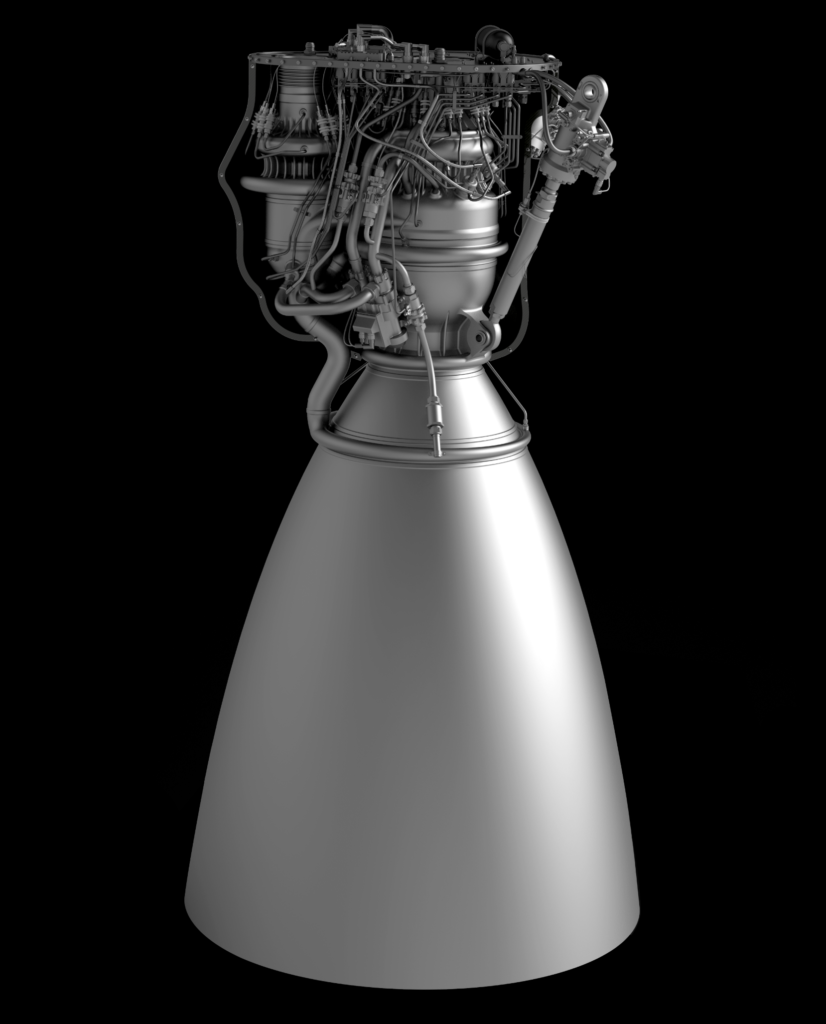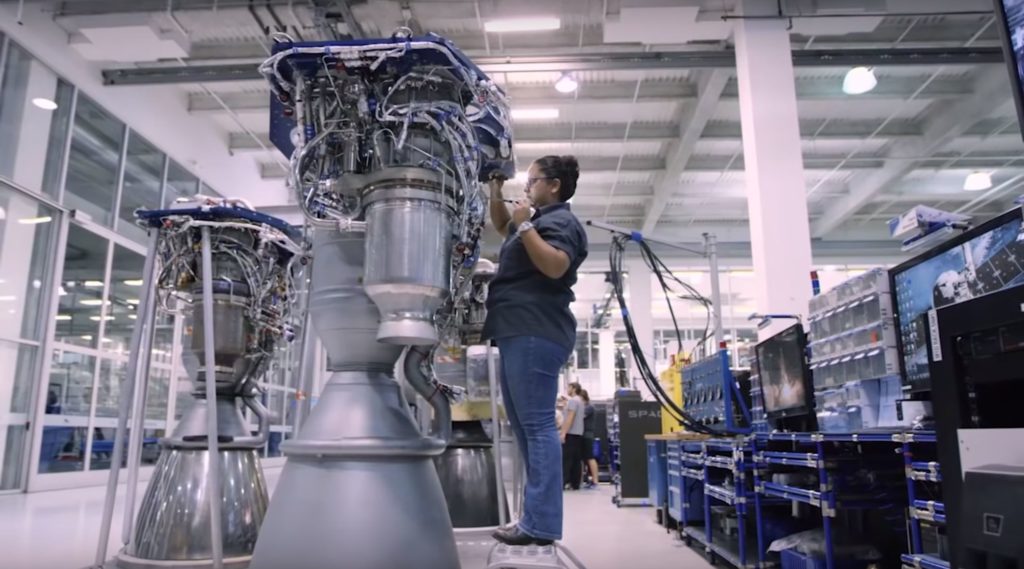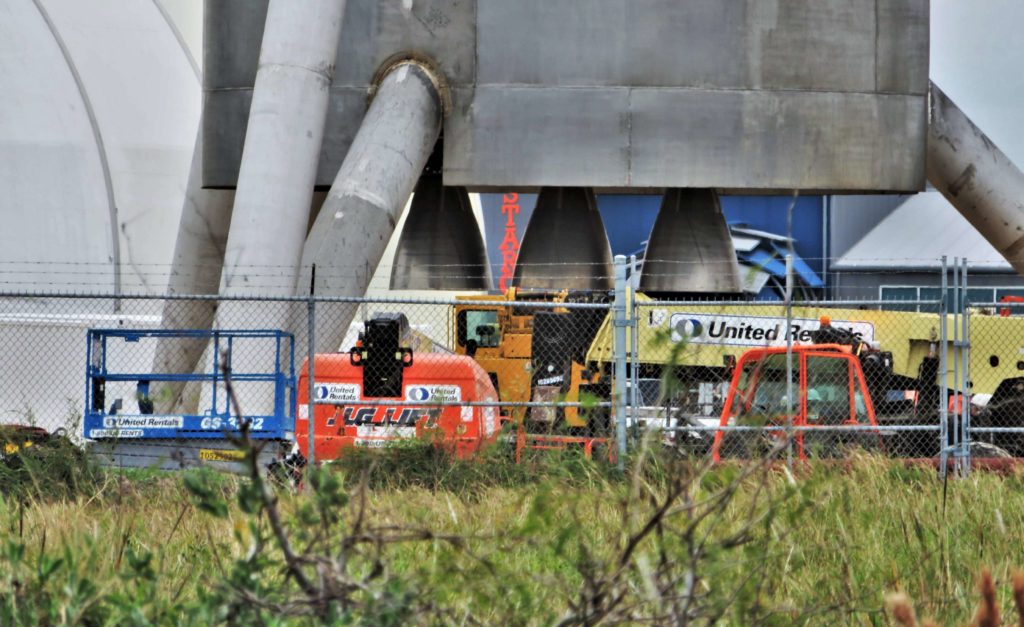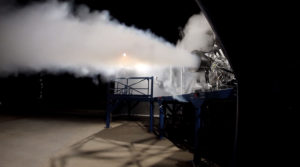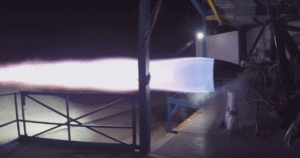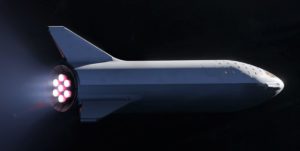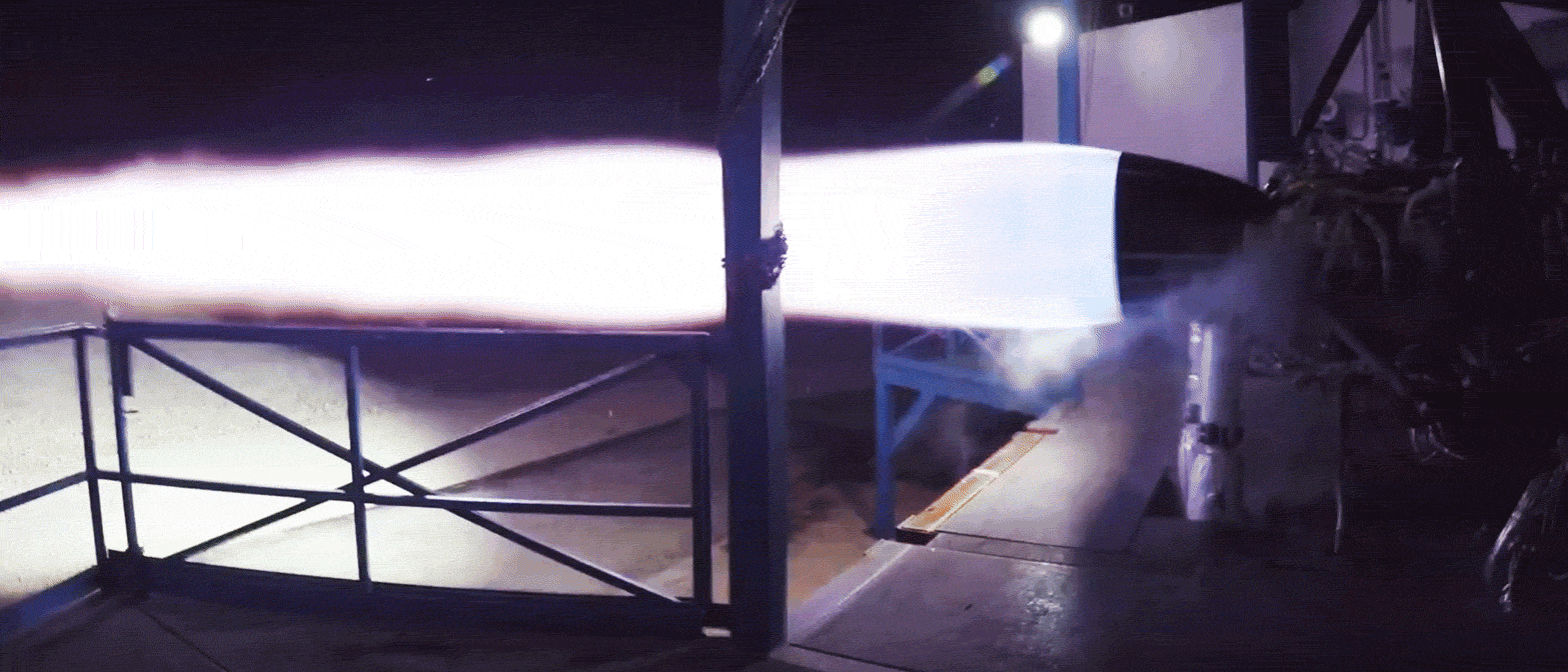
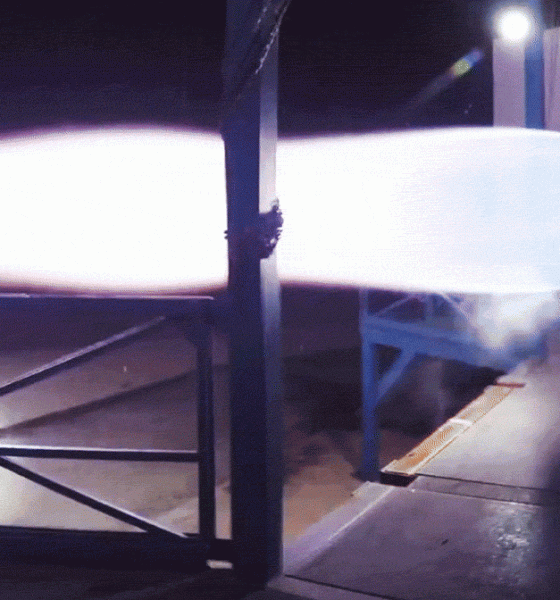
News
SpaceX sends “radically redesigned” Starship engine to Texas for hot-fire tests
SpaceX has shipped one of the first of a group of Starship engines known as Raptor, described last month by CEO Elon Musk as “radically redesigned”. A culmination of more than 24 months of prototype testing, the first flight-worthy Raptor could be ignited for the first time as early as February.
According to Musk, three of these redesigned Raptors will power the first full-scale BFR prototype, a Starship (upper stage) test article meant to conduct relatively low-altitude, low-velocity hop tests over the southern tip of Texas. Those tests could also begin next month, although a debut sometime in March or April is increasingly likely.
Engines currently on Starship hopper are a blend of Raptor development & operational parts. First hopper engine to be fired is almost finished assembly in California. Probably fires next month.
— Elon Musk (@elonmusk) January 5, 2019
Effectively designed on a blank slate, Raptor began full-scale component-level tests in 2014 at NASA’s Mississippi-based Stennis Space Center, evolving from main injector development to oxygen preburner hot-fires in 2015. Soon after Raptor’s prototype preburner design was validated at Stennis, SpaceX moved testing to its privately-owned and operated facilities in McGregor, Texas, where Raptor static fire testing has remained since.
Mach diamonds pic.twitter.com/TCX7ZGFnN0
— Elon Musk (@elonmusk) September 26, 2016
Just days before CEO Elon Musk was scheduled to reveal SpaceX’s next-generation rocket (BFR, formerly known as the Interplanetary Transport System or ITS) in September 2016, he announced in a tweet that propulsion engineers and technicians had successful hot-fired an integrated Raptor prototype – albeit subscale – for the first time ever. Just 12 months later, Musk once again took to the stage to announce an update to BFR’s design, while also revealing that prototype Raptor engines had already completed more than 1200 seconds (20 minutes) of cumulative hot-fire tests, an extremely aggressive and encouraging rate of progress for such a new engine.
SpaceX has completed over 1,200 seconds of firing across 42 main Raptor engine tests. pic.twitter.com/EhxbPjd8Cj
— SpaceX (@SpaceX) September 29, 2017
Although Raptor undoubtedly borrows heavily from much of the same expertise that designed Merlin 1 and operated and improved it for years, that is roughly where the similarities between Raptor and M1D end. M1D, powered by refined kerosene (RP-1) and liquid oxygen, uses a combustion cycle (gas-generator) that is relatively simple and reliable at the cost of engine efficiency, although SpaceX propulsion expertise still managed to give M1D the highest thrust-to-weight ratio of any liquid rocket engine ever flown. Still, measured by ISP (instantaneous specific impulse), M1D’s inefficient kerolox gas-generator cycle ultimately means that the engine simply can’t compete with the performance of engines with more efficient propellants and combustion cycles.
While SpaceX’s Falcon 9 and Heavy rockets – powered by Merlin 1D and Merlin Vacuum – are more than adequate in and around Earth orbit, a far more efficient engine was needed for the company to enable the sort of interplanetary colonization Musk had in mind when he created SpaceX. Raptor was the answer. Ultimately settling on liquid methane and oxygen (methalox) as the propellant and a full-flow staged-combustion (FFSC) cycle, Raptor was designed to be extraordinarily reliable and efficient in order to safely power a spacecraft (BFS/Starship) meant to ferry dozens or hundreds of people to and from Mars.
- The only official render of Raptor, published by SpaceX in September 2016. The Raptor departing Hawthorne in Jan ’19 looked reasonably similar. (SpaceX)
- SpaceX technicians wrench on Merlin 1D and Merlin Vacuum engines. Raptor was apparently dramatically larger in person. (SpaceX)
- Starhopper’s Raptors feature a very distinct seam and second curve, indicative of a dual-bell nozzle. (NASASpaceflight /u/bocachicagal)
Raptor enters a new era
For all the extensive and invaluable testing SpaceX has done with a series of prototype Raptor engines, the engines tested were subscale versions with around 30% the thrust of the c. 2016 Raptor and around 40-50% of the updated c. 2017 iteration, producing almost the same amount of thrust as Merlin 1D (914 kN to Raptor’s ~1000 kN). In September 2018, Musk described Raptor as an “approximately…200-ton (~2000 kN) thrust engine” that would eventually operate with a chamber pressure as high as 300 bar (an extraordinary ~4400 psi), requiring at least one of the FFSC engine’s two preburners (used to power separate turbopumps) to operate at a truly terrifying ~810 bar (nearly 12,000 psi).
Conveniently stood beside a Merlin 1D engine also ready for hot-fire acceptance testing, the Raptor engine spotted departing SpaceX’s Hawthorne, CA factory last week was reportedly immense in person, towering over an M1D engine. Raptor also featured a mass of spaghetti-like plumbing (complexity necessary for its advanced combustion cycle), with a significant fraction of the metallic pipes and tubes displaying mirror-like finishes. Most notable was an obvious secondary preburner/turbopump stack and the lack of any exhaust port, whereas M1D relies on a single turbopump and exhausts the gases used to power it. Raptor’s full-flow staged-combustion cycle uses separate oxygen and methane preburners to power separate turbopumps, significantly improving mass flow rate and smoothing out combustion mixing.
- SpaceX’s current Texas facilities feature a test stand for Raptor, the engine intended to power BFR and BFS to Mars. (SpaceX)
- SpaceX’s subscale Raptor engine has completed more than 1200 seconds of testing in less than two years. (SpaceX)
- A gif of Raptor throttling over the course of a 90+ second static-fire test in McGregor, Texas. (SpaceX)
- A September 2018 render of Starship (then BFS) shows one of the vehicle’s two hinged wings/fins/legs. (SpaceX)
Unlike all previous hot-fired Raptors, those shipping now to McGregor, Texas are expected to be the first completed engines with a finalized design, arrived at only after a period of extensive testing and iterative improvement. They also appear to be full-scale, meaning that the test bays dedicated to Raptor will likely need to be upgraded (if they haven’t been already) to support a two- or threefold increase in maximum thrust.
Yes. Radically redesigned Raptor ready to fire next month.
— Elon Musk (@elonmusk) December 22, 2018
SpaceX’s Starship hopper will need three finalized engines, meaning that the Raptor now in McGregor, Texas may not have been the first to arrive. Nevertheless, the shipment of full-scale hardware is always an extremely encouraging milestone for any advanced technology development program, while also foreshadowing the first imminent static-fires of the “radcally redesigned” rocket engine. With hardware now at the test site before January is out, a February test debut – one month behind a January debut teased by Elon Musk last December – is not out of the question.

News
Tesla FSD fleet is nearing 7 billion total miles, including 2.5 billion city miles
As can be seen on Tesla’s official FSD webpage, vehicles equipped with the system have now navigated over 6.99 billion miles.

Tesla’s Full Self-Driving (Supervised) fleet is closing in on almost 7 billion total miles driven, as per data posted by the company on its official FSD webpage.
These figures hint at the massive scale of data fueling Tesla’s rapid FSD improvements, which have been quite notable as of late.
FSD mileage milestones
As can be seen on Tesla’s official FSD webpage, vehicles equipped with the system have now navigated over 6.99 billion miles. Tesla owner and avid FSD tester Whole Mars Catalog also shared a screenshot indicating that from the nearly 7 billion miles traveled by the FSD fleet, more than 2.5 billion miles were driven inside cities.
City miles are particularly valuable for complex urban scenarios like unprotected turns, pedestrian interactions, and traffic lights. This is also the difference-maker for FSD, as only complex solutions, such as Waymo’s self-driving taxis, operate similarly on inner-city streets. And even then, incidents such as the San Francisco blackouts have proven challenging for sensor-rich vehicles like Waymos.
Tesla’s data edge
Tesla has a number of advantages in the autonomous vehicle sector, one of which is the size of its fleet and the number of vehicles training FSD on real-world roads. Tesla’s nearly 7 billion FSD miles then allow the company to roll out updates that make its vehicles behave like they are being driven by experienced drivers, even if they are operating on their own.
So notable are Tesla’s improvements to FSD that NVIDIA Director of Robotics Jim Fan, after experiencing FSD v14, noted that the system is the first AI that passes what he described as a “Physical Turing Test.”
“Despite knowing exactly how robot learning works, I still find it magical watching the steering wheel turn by itself. First it feels surreal, next it becomes routine. Then, like the smartphone, taking it away actively hurts. This is how humanity gets rewired and glued to god-like technologies,” Fan wrote in a post on X.
News
Tesla starts showing how FSD will change lives in Europe
Local officials tested the system on narrow country roads and were impressed by FSD’s smooth, human-like driving, with some calling the service a game-changer for everyday life in areas that are far from urban centers.

Tesla has launched Europe’s first public shuttle service using Full Self-Driving (Supervised) in the rural Eifelkreis Bitburg-Prüm region of Germany, demonstrating how the technology can restore independence and mobility for people who struggle with limited transport options.
Local officials tested the system on narrow country roads and were impressed by FSD’s smooth, human-like driving, with some calling the service a game-changer for everyday life in areas that are far from urban centers.
Officials see real impact on rural residents
Arzfeld Mayor Johannes Kuhl and District Administrator Andreas Kruppert personally tested the Tesla shuttle service. This allowed them to see just how well FSD navigated winding lanes and rural roads confidently. Kruppert said, “Autonomous driving sounds like science fiction to many, but we simply see here that it works totally well in rural regions too.” Kuhl, for his part, also noted that FSD “feels like a very experienced driver.”
The pilot complements the area’s “Citizen Bus” program, which provides on-demand rides for elderly residents who can no longer drive themselves. Tesla Europe shared a video of a demonstration of the service, highlighting how FSD gives people their freedom back, even in places where public transport is not as prevalent.
What the Ministry for Economic Affairs and Transport says
Rhineland-Palatinate’s Minister Daniela Schmitt supported the project, praising the collaboration that made this “first of its kind in Europe” possible. As per the ministry, the rural rollout for the service shows FSD’s potential beyond major cities, and it delivers tangible benefits like grocery runs, doctor visits, and social connections for isolated residents.
“Reliable and flexible mobility is especially vital in rural areas. With the launch of a shuttle service using self-driving vehicles (FSD supervised) by Tesla in the Eifelkreis Bitburg-Prüm, an innovative pilot project is now getting underway that complements local community bus services. It is the first project of its kind in Europe.
“The result is a real gain for rural mobility: greater accessibility, more flexibility and tangible benefits for everyday life. A strong signal for innovation, cooperation and future-oriented mobility beyond urban centers,” the ministry wrote in a LinkedIn post.
News
Tesla China quietly posts Robotaxi-related job listing
Tesla China is currently seeking a Low Voltage Electrical Engineer to work on circuit board design for the company’s autonomous vehicles.

Tesla has posted a new job listing in Shanghai explicitly tied to its Robotaxi program, fueling speculation that the company is preparing to launch its dedicated autonomous ride-hailing service in China.
As noted in the listing, Tesla China is currently seeking a Low Voltage Electrical Engineer to work on circuit board design for the company’s autonomous vehicles.
Robotaxi-specific role
The listing, which was shared on social media platform X by industry watcher @tslaming, suggested that Tesla China is looking to fill the role urgently. The job listing itself specifically mentions that the person hired for the role will be working on the Low Voltage Hardware team, which would design the circuit boards that would serve as the nervous system of the Robotaxi.
Key tasks for the role, as indicated in the job listing, include collaboration with PCB layout, firmware, mechanical, program management, and validation teams, among other responsibilities. The role is based in Shanghai.
China Robotaxi launch
China represents a massive potential market for robotaxis, with its dense urban centers and supportive policies in select cities. Tesla has limited permission to roll out FSD in the country, though despite this, its vehicles have been hailed as among the best in the market when it comes to autonomous features. So far, at least, it appears that China supports Tesla’s FSD and Robotaxi rollout.
This was hinted at in November, when Tesla brought the Cybercab to the 8th China International Import Expo (CIIE) in Shanghai, marking the first time that the autonomous two-seater was brought to the Asia-Pacific region. The vehicle, despite not having a release date in China, received a significant amount of interest among the event’s attendees.
